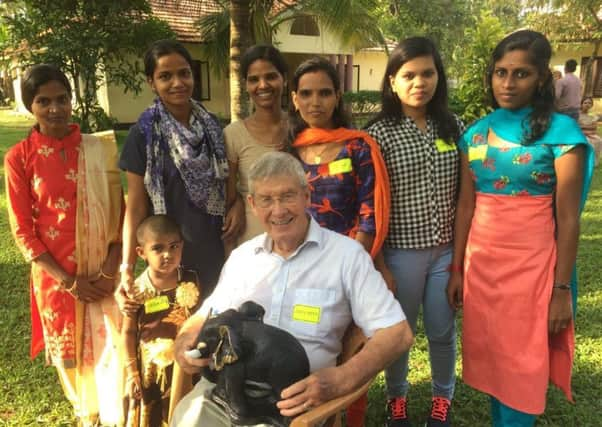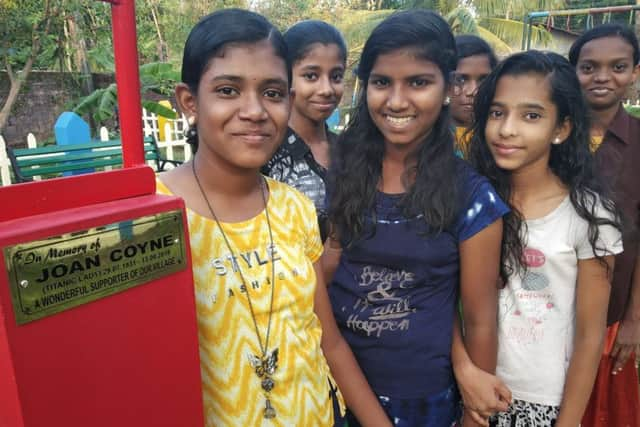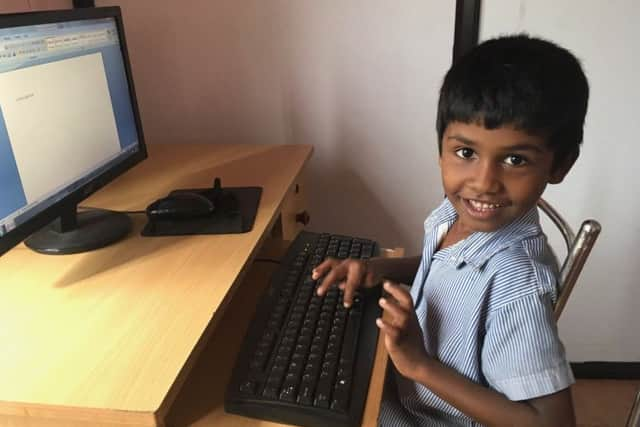Meet the Yorkshire volunteers who are helping the plight of Indian children


Siblings Sebi, Seena and Sini were the first three children to walk down the path into Hope Community Village. They had lost both of their parents and had been brought to the care community in India by their elderly tribal grandmother, with only a handful of possessions to their name.
John Veitch and his wife Norma were there to welcome them. “These three children came down the pathway...and between them, they had one half filled plastic carrier bag,” John recalls. “That was their total belongings. You just saw them coming and thought My God that’s all they have in life.”
Advertisement
Hide AdAdvertisement
Hide Ad

John, a West Yorkshire businessman founded Hope to support children in crisis in the Indian state of Kerala around 25 years ago. Since those first youngsters arrived in 1996, aged seven, five and three, the charity has helped more than 100 orphaned and destitute children, by offering them long-term family care and educational opportunities. “All of the children that have come to us have come to us from poverty, from poor backgrounds and many of them have been abused physically or sexually,” John, 79, explains. “The whole idea is that we look after children in a family and not just feed them but best educate them...We aim to take them out of poverty.”
Today, the Hope village is made up of six houses , each with a ‘mother’ who is allocated a family of up to 10 children to care for, ranging from toddlers to teenagers. A few kilometres away is a hostel to accommodate the facility’s older boys, and also on site is a kindergarten attended by its younger children, as well as around 60 more from nearby areas. Completing the village is an accommodation block for retired ‘mothers’ and an IT suite and library from which both Hope’s children and the local community can benefit. The site is also used as a centre for providing medical services for families living in the district.
“I think it is important that children have a family life and are part of a family,” says John, who lives in Skircoat Green in Halifax. “We’ve got a playground, they play out. We do all sorts of things that probably they wouldn’t get if they were in a more institutionalised environment.” The bond between ‘mothers’ and children and among house siblings is “amazing”, he says. “You will not believe how they just are brothers and sisters and friends. It’s just like a family life. It’s amazing how they just operate as a family and right from coming in as well. They fall into it very easily.”
Advertisement
Hide AdAdvertisement
Hide AdHope tries to emulate the life of a typical Indian family. An average day will see children wake up early, do their homework and then head to their local schools after breakfast. Their evenings will include leisure and playtime, more homework and dinner, and across evenings and weekends there are various activities available including music and dance classes and football.


The role of the ‘mothers’, who receive an income, is to provide the children with shelter, food, support and encouragement and undertake general housekeeping. English and IT skills are high on the priority list for children, to give them “the greatest opportunity to go on to gain good employment”, whilst the mothers are taught conversational English too. “It’s not just a matter of looking after the children and taking them out of poverty. It’s the same for the mothers,” John says.
The father-of-two was inspired to set up the charity, which is modelled in part on SOS Children’s Villages in India, after making several trips to the south of the country for business. He had studied economics at the University of Hull, going on to work in marketing for Proctor and Gamble, before he launched his first company Oaklea Products in 1977, three years after he and Norma, a now-retired primary school teacher, settled in Calderdale. He later sold the business and launched a second company, JVL Products.
Based in Myhtholmroyd, the firm supplied major supermarkets with stock including coir mats imported from India and basketware from China. “You couldn’t help but see the poverty, children on the streets,” he says, recalling his trade tips to India. “As an individual, you do look and feel sorry for what’s going on.” The deprivation endured by some locals, particularly children from disadvantaged families, prompted John to take action and he set about fundraising for the cause. By running the London Marathon in 1994, he raised £8,500 to buy land on the outskirts of Alappuzha and he later cycled hundreds of miles up the coast from there to Goa, raising another £6,500 to build the first house.
Advertisement
Hide AdAdvertisement
Hide AdA committee is responsible for the day-to-day running of the Hope village, which currently cares for around 70 children, whilst a board of trustees, all volunteers, runs the UK arm of the charity, based in Halifax. Their role is one of overall oversight, as well as generating the £8,000 per month costs of running Hope, including through donations from charitable trusts, fundraising events and encouraging people to sponsor children.
The charity has been John’s main focus since he retired from business around 14 years ago and his family too are involved - Norma as a trustee and their sons Patrick and Jonathan both as sponsors for children. More than half of the trustees are from Calderdale including Steve and Liv Redmond, who became heavily involved in the charity in 2005 and have helped to raise more than £100,000 over the past few years.
“We get to know the children, see them develop, see their successes. It’s very, very rewarding work,” Steve says. “Very often the children have been traumatised or they may have suffered emotionally and we need to turn that around. The family-based approach that we have is very successful at doing that. You end up with so many happy smiling faces.” Like John, the couple, retired teachers who live near Hebden Bridge visit Hope every year to see the children “blossom”. “You can see troubled children arriving in the facility there who have come from backgrounds which are very, very, dubious,” says Steve. “It could be that they have been maltreated in some way or abused and it takes them a few months but they do settle and they bond with the mothers and it is a lovely relationship.”
The children, he says, are often too young to understand what the alternatives could have been “but we make sure they are brought up in a caring and loving environment in such a way that they can benefit emotionally and overcome whatever difficulties they might have had in their own families. It’ a model of good practice.”
Advertisement
Hide AdAdvertisement
Hide AdThe aim for Hope is to break the cycle of poverty and return its children to the community as confident, independent adults, knowing they will always have a family in the village and somewhere to turn for advice and support. Some of the girls who were raised there are now married “and we’ve actually got grandchildren now”, Steve says. “It’s an interesting twist to the whole scenario of family life.”
Hope pays for education, including at post-16 level. Several of its children have completed training courses and university degrees and now hold jobs in IT and engineering and as chefs, nurses, and hotel workers. “The fact is that we make a significant difference to the lives of these children,” says John. “The important thing is they carry this story forward. They are very conscious about helping children in need.”
As for Hope’s first arrivals the eldest is now a top chef in Doha, Qatar, one sister works as a housekeeping supervisor in a 5* hotel and the other is happily married with a child of her own. “That’s a success story,” says John with pride and genuine thanks to all those who continue to support Hope. “Well, all of them are.”
To find out more about the work of the charity, or pledge support, visit www.hopeindia.org